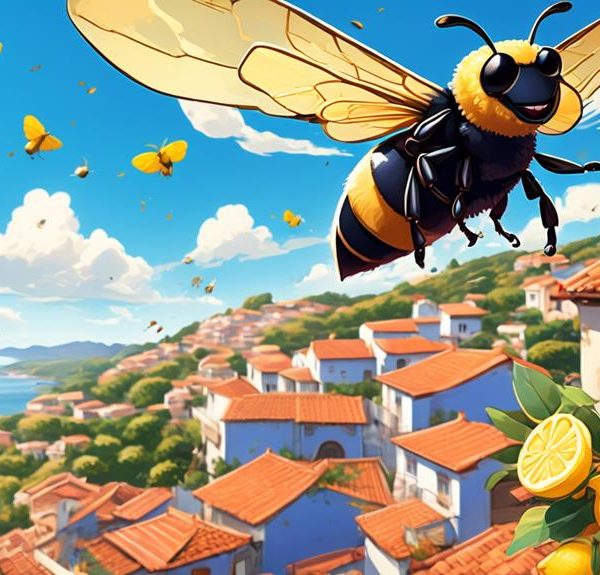Known for their distinct behavior, uncover the debate surrounding the native origins of carpenter bees – could they be from Australia?
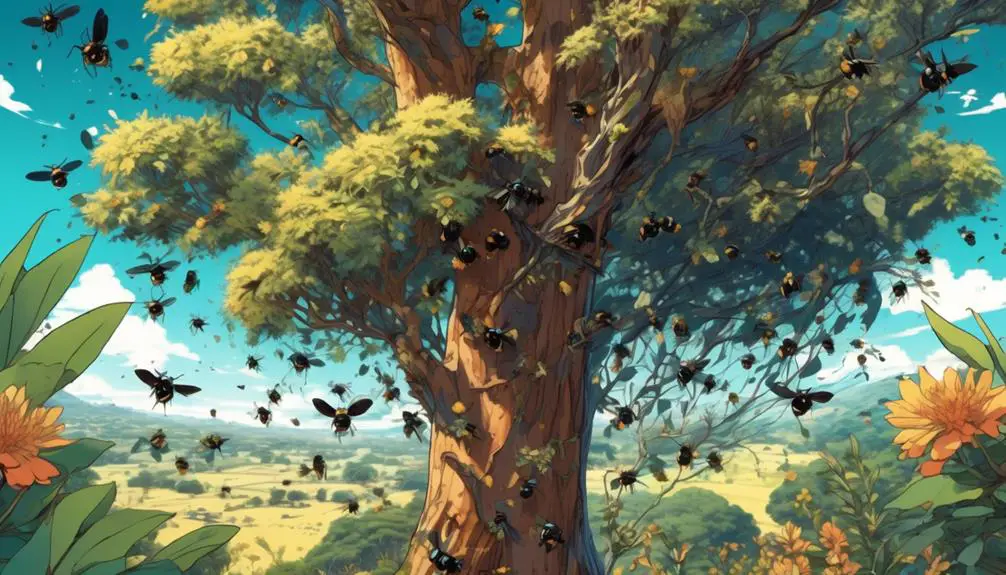
Are Carpenter Bees Native to Australia
You've likely heard the theory that carpenter bees are native to Australia, but how accurate is this claim? These fascinating insects, known for their unique nesting habits in wood, have a wide global distribution.
Yet, the question of their origin continues to stir up debate among researchers and enthusiasts alike. As you explore this intriguing topic, you'll discover differing viewpoints, backed by compelling evidence, that may challenge what you think you know about these industrious creatures.
Key Takeaways
- Carpenter bees have established themselves in the northern regions of Australia, particularly in Queensland and the Northern Territory.
- These bees, known as Xylocopa, are identified by their size and metallic blue-black sheen.
- Carpenter bees are essential cross-pollinators in Australia, contributing to plant biodiversity and supporting many birds and mammals that rely on their pollination.
- While they can cause structural damage to trees and wooden buildings, balancing their population is crucial for pollination purposes while mitigating potential harm.
Understanding Carpenter Bees

Diving into the world of carpenter bees, you'll find these fascinating insects aren't your typical bees, renowned for their exceptional ability to bore into wood to create nesting sites. They're not just woodworkers; they're also critical pollinators. You'll often spot them in spring and summer, buzzing around wooden structures.
Their name comes from their unique nesting behaviour. Unlike other bees that build hives or nests in the ground, carpenter bees prefer to nest within wood. They're capable of drilling nearly perfect, round holes into wood surfaces. They'll often return to the same site year after year, causing considerable damage if not addressed.
You'll find two primary types of these bees, large and small carpenter bees. The larger variety can reach up to 1 inch in length, while their smaller counterparts typically measure less than half an inch. Despite their size, they're quite harmless. Only the female can sting, and she'll only do so when provoked.
Understanding carpenter bees and their behaviour helps us appreciate their role in nature and manage their potential threat to our wooden structures. It's clear these unique creatures are more than just another buzzing insect. They're intricate, industrious, and invaluable to our ecosystem.
Carpenter Bees' Global Distribution
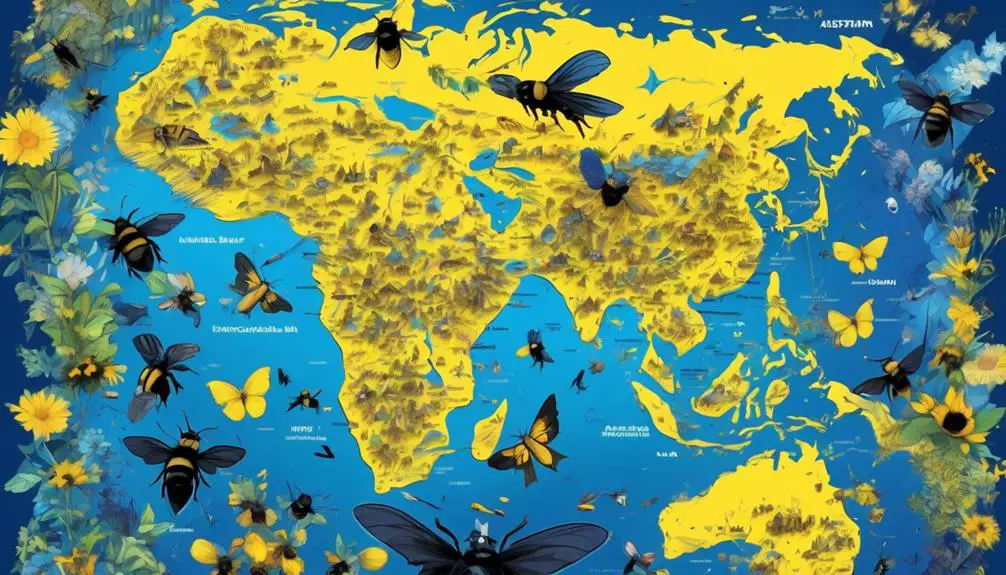
You'll find carpenter bees across the globe, with their vast distribution spanning every continent except Antarctica. These fascinating insects have adapted to a wide array of environments, from deserts to rainforests. They're particularly abundant in tropical regions where wood, their preferred nesting material, is plentiful.
Below is a table showcasing the distribution of carpenter bees in five major regions:
Region | Carpenter Bees Presence |
|---|---|
North America | Widespread |
Europe | Predominantly Southern |
Asia | Extensive, particularly in tropical areas |
Africa | Abundant, especially in the savannah |
Australia | Mostly in the Northern parts |
In North America, you'll find them from Canada to Mexico, while in Europe, they're mostly concentrated in the southern parts. Asia's tropical forests provide an ideal habitat for these bees. In Africa, they're especially prevalent in the vast savannahs. Australia's carpenter bee population is primarily in the Northern parts, which correlates with the tropical climate.
Carpenter Bees in Australia: Overview

In the sun-drenched northern regions of Australia, carpenter bees have established themselves as a significant part of the local ecosystem, thriving in the tropical climate. These industrious insects, known scientifically as Xylocopa, are a fascinating subject of study. They've made a niche for themselves, expertly burrowing into hardened wood to create intricate nest galleries.
As you journey through the lush landscapes of Queensland and the Northern Territory, you're likely to encounter these giant bees. They're easily identified by their size, often as large as a human thumb, and their vibrant, metallic blue-black sheen. Females of the species are solitary, each crafting their own nests, while males tend to be territorial, guarding the nest entrances.
However, they're not just a sight to behold. Carpenter bees play a crucial role in the pollination of native Australian plants, contributing to the lush biodiversity of the area. They're particularly fond of the macadamia tree, a native Australian species. Yet, their numbers are dwindling due to habitat loss and deforestation.
It's a situation that requires attention, for the preservation of these hardworking bees is vital for the health of Australia's ecosystems.
Impact on Australia's Ecosystem
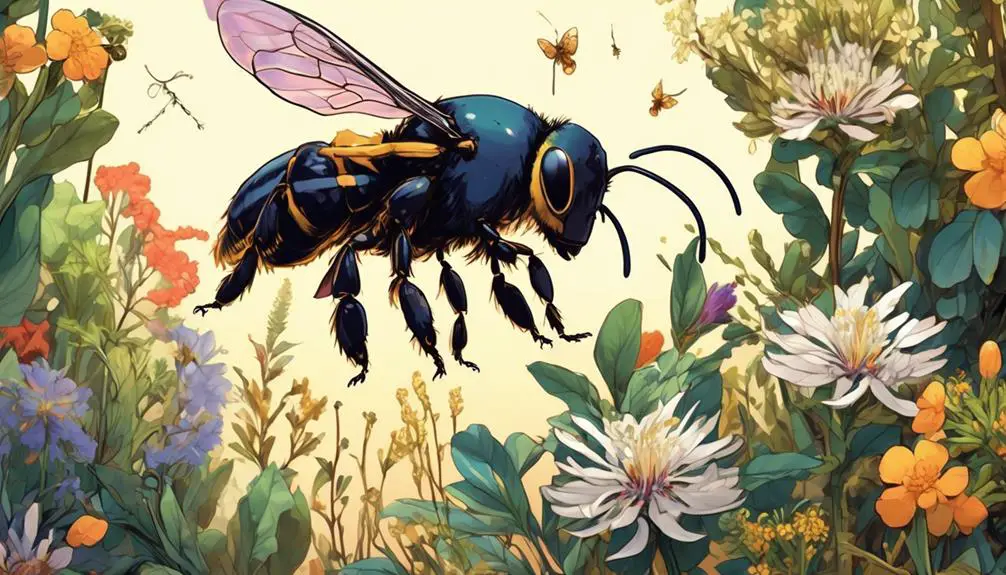
While it's easy to marvel at the carpenter bee's striking appearance and industrious nature, it's their critical role in the pollination of native Australian plants that truly underscores their importance to the local ecosystem. You see, these industrious insects are essentially ecological engineers. They're vital cross-pollinators, transferring pollen from male to female plant parts, which helps a diverse range of native flora to reproduce and thrive.
Not only do these bees contribute to plant biodiversity, but they also play a key role in the survival of other species. Many birds and mammals rely on plants pollinated by carpenter bees for food and habitat. So, without these bees, you'd see a ripple effect throughout the ecosystem.
On the flip side, carpenter bees can also have a negative impact. They bore perfectly round holes into wood to create nests, which can cause structural damage to trees and wooden buildings. It's a delicate balance – maintaining their population for pollination purposes, while mitigating their potential to harm.
Clearly, carpenter bees are integral to the intricate web of life in Australia's ecosystem.
Addressing Common Misconceptions
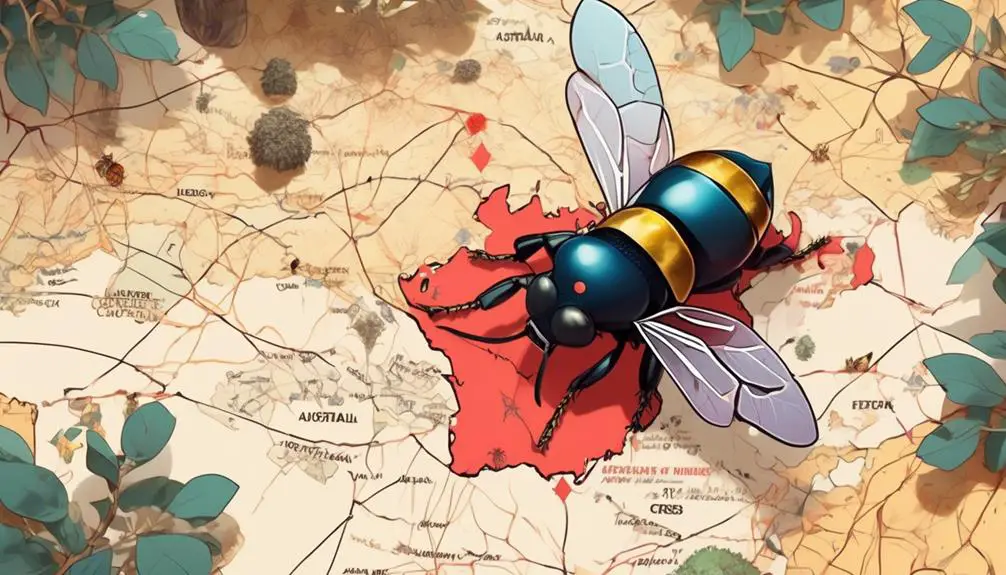
Despite their critical role in Australia's ecosystem, there are countless misconceptions surrounding carpenter bees that often overshadow their importance.
One common fallacy is that these bees are harmful to wooden structures. In reality, carpenter bees rarely cause significant damage; they prefer dead, untreated wood and tend to avoid painted or varnished surfaces.
Another myth is that carpenter bees are aggressive. Quite the contrary, they're generally harmless unless provoked. Male carpenter bees, despite their threatening behavior, can't sting. Females can, but they're typically docile and only sting when threatened.
Many people also mistakenly believe that all bees produce honey. It's crucial to understand that carpenter bees, unlike their honeybee counterparts, don't produce honey. They're solitary bees that focus more on pollinating plants than producing honey.
Lastly, there's a misconception that carpenter bees are non-native, invasive species in Australia. This couldn't be further from the truth. Carpenter bees are, in fact, native to Australia and play a vital role in the pollination of native plants, particularly those with large flowers.
Conclusion
So, you've learned carpenter bees aren't native to Australia, yet they've found a home there. Their global distribution is vast, and their effect on the Australian ecosystem is significant.
There's a lot of misinformation about these bees, but now you're armed with the facts. Understanding their role and impact is crucial for conservation efforts, ensuring these industrious insects continue to contribute to the biodiversity of our planet.
Knowledge truly is power when it comes to these remarkable creatures.

